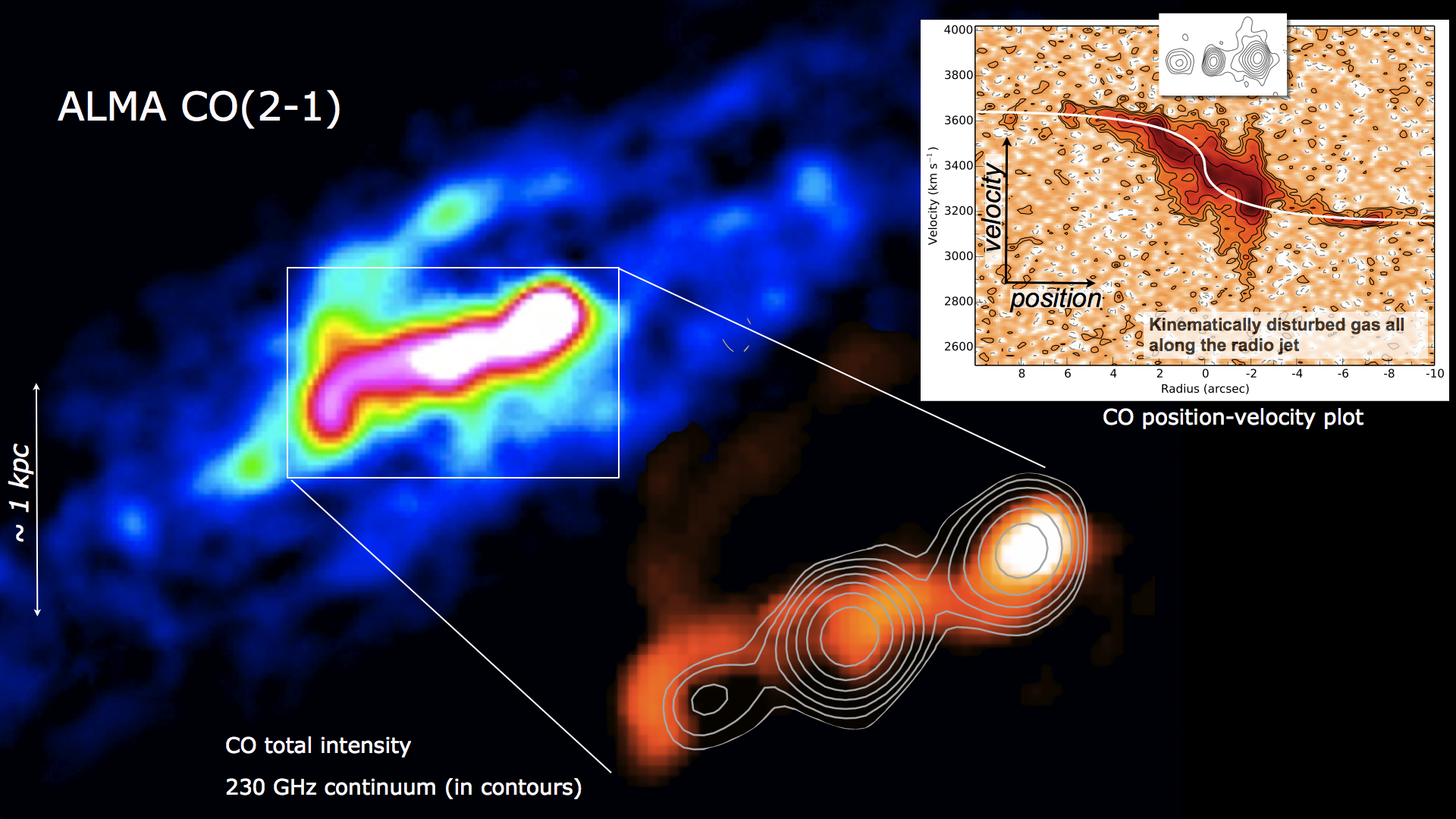Daily Image
18-08-2015A fast molecular outflow as seen by ALMA
| Submitter: | Raffaella Morganti & Tom Oosterloo |
| Description: | It is now well established that cold gas can be expelled from galaxies at high velocities. This is an important observation because cold gas is what is needed to form new stars. Expelling the gas means reducing, or even stopping, the process of star formation with important consequences for the evolution of the host galaxy. One possible mechanism is that the cold gas gets blown out of a galaxy via the interaction with the fast radio jets coming from the Super-Massive Black Hole in the galaxy centre. This is still a poorly understood process because the details of it are very difficult to observe directly. The situation has now very much improved through ALMA observations of the radio-loud, Seyfert 2 galaxy IC5063, an old friend of ours and a regular guest of the Astron/Jive Daily Images (1-3-2013 and 22-10-2007). We have used high-resolution (0.5 arcsec) CO(2-1) observations performed with ALMA to trace the kinematics of the molecular gas in this galaxy. From earlier observations, IC 5063 was known to have a fast outflow of cold gas driven by the radio jets in this galaxy, but due to the low spatial resolution of these data, it was not possible to study it in detail. The new ALMA data have much better resolution and allow to image, for the first time, in detail a massive, fast outflow - with velocities up to 650 km/s - of cold molecular gas. Although, as expected, the highest outflow velocities are seen at the location where the radio jet directly hits a large gas cloud (about 0.5 kpc from the nucleus), the exiting result is that the outflow of molecular gas actually extends along the entire radio jet (see the position-velocity plot in the figure above). It is the first time that the process of a plasma jet interacting with the surrounding medium can be followed in such a detail. All the observed characteristics can be described by a scenario of a radio plasma jet expanding into a clumpy gaseous medium, interacting directly with the clouds while also inflating a cocoon of gas that drives a lateral outflow into the interstellar medium. Interestingly, this model is consistent with results obtained by recent numerical simulations so it looks like things are starting to make sense. The detailed description of the results can be found in a paper published in Astronomy & Astrophysics "The fast molecular outflow in the Seyfert galaxy IC~5063 as seen by ALMA" by Raffaella Morganti, Tom Oosterloo, Raimond Oonk, Wilfred Frieswijk and Clive Tadhunter. Click http://arxiv.org/abs/1505.07190 for the full paper |
| Copyright: | ASTRON |
| Tweet |  |
